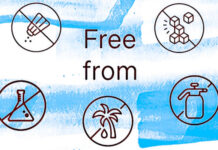Good fats and less good, how to distinguish them on the label? Thanks to their names, but also to the
nutrition statement
and to the
nutrition claims
, which are the main sources of information on the role of foods in the diet. And they can actually help consumers choose the best foods, abhorring the junk food. (1)
Nutrition labeling in labeling
The epidemic of
globesity
– Which has seen an almost threefold increase in obese people in the world in 30 years-from 200 million in 1995 to half a billion today-has prompted several states to mandate nutrition declaration on labels. (2) Which has not been enough to reverse the growing trend of overweight and obesity, but no doubt can increase consumer awareness.
The nutrition declaration
in Europe consists of seven elements among which fat and saturated fat stand out, right after energy, referring to 100 grams of product.
Voluntary information can be extended to values per serving (3) and include, after saturated fat, monounsaturated fat and polyunsaturated fat.
Nutrition claims related to fats
EC Regulation 1924/06, so-calledNutrition & Health Claims (NHC), annexes an exhaustive list of nutrition claims that can be used, on labels and advertisements, to describe the characteristics of food products. Among the nutrition claims allowed, subject to compliance with established conditions, (4) some concern the contents of different fatty acids in foods. Their list follows.
Low in saturated fat
A claim that a food is low in saturated fat and any other claim likely to have the same meaning for the consumer are only allowed if the sum of saturated fatty acids and trans fatty acids (TFA, Trans-Fatty Acids) contained in the product does not exceed 1.5 g/100 g for solids or 0.75 g/100 ml for liquids. In both cases, the sum of saturated fatty acids and trans fatty acids cannot amount to more than 10 percent of energy intake.
By subsequent regulations (EC reg. 1047, 1048/2008), the Commission also ruled that ‘The claim ‘reduced in saturated fat‘ and any other claims of equal meaning are allowed only if:
(a) the sum of saturated fatty acids and trans fatty acids in the product is at least 30% lower than the sum of saturated fat and TFA in similar products; and
(b) the trans fatty acid content of the product is equal to or less than that traceable in similar products.
Rich in monounsaturated fats
A claim that a food is rich in monounsaturated fats and any other claims of similar meaning are allowed only if at least 45 percent of the fatty acids in the product are derived from monounsaturated fats. As well as provided that monounsaturated fats contribute more than 20 percent of the energy value of the product.
Rich in polyunsaturated fats
A claim that a food is rich in polyunsaturated fats and any other similar claims are allowed only if at least 45 percent of the fatty acids in the food are derived from polyunsaturated fats. And provided polyunsaturated fats contribute more than 20 percent of the energy value of the product.
Rich in unsaturated fats
The claim ‘rich in unsaturated fats’ and claims of equal meaning ono allowed only if at least 70 percent of the fatty acids in the product are derived from unsaturated fats. Provided that unsaturated fats contribute more than 20 percent of the energy value of the product.
Source of Omega-3 fatty acids
I nutrition claim of the type ‘contains‘, ‘with‘ o ‘source of (fatty acids) Omega-3‘ postulate that the product contains at least 0.3 g alpha-linolenic acid (ALA) per 100 g per 100 kcal, or at least 40 mg of the sum of eicosapentanoic acid (EPA) and docosahexaenoic acid (DHA) per 100 g per 100 kcal.
Rich in omega-3 fatty acids
The boast referred to the richness of omega-3 fatty acids., or others of similar meaning, can only be legitimately expressed when the product contains at least 0.6 g of alpha-linolenic acid per 100 g and per 100 kcal, or at least 80 mg of the sum of EPA and DHA per 100 g and per 100 kcal.
Dario Dongo
(1) Studies on the effectiveness of nutrition labeling include the European project Flabel
(2) The nutrition declaration is now mandatory in Europe, the U.S., Canada, Mexico, Brazil, Argentina, China, Colombia, Ecuador, Paraguay, Uruguay, Israel, Japan, India, Chile, Hong Kong, South Korea, Taiwan, Malaysia, Australia, and New Zealand, in addition to the Persian Gulf states
(3) Provided that you identify the portion exactly, specifying the quantity and number inside the package
(4) V. reg. EC 1924/06 as amended. The consolidated text on http://eur-lex.europa.eu/legal-content/IT/TXT/HTML/?uri=CELEX:02006R1924-20141213&qid=1523395296169&from=EN. For the
sanctions
, see the
d.lgs. 27/17
, at
https://www.greatitalianfoodtrade.it/etichette/nutrition-health-claims-sanzioni-in-italia-in-vigore-dall-1-aprile-2017
Dario Dongo, lawyer and journalist, PhD in international food law, founder of WIISE (FARE - GIFT - Food Times) and Égalité.








